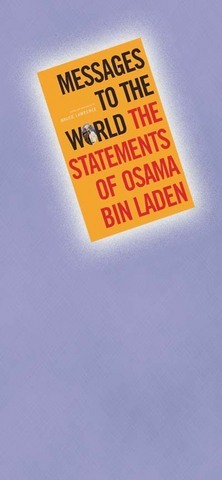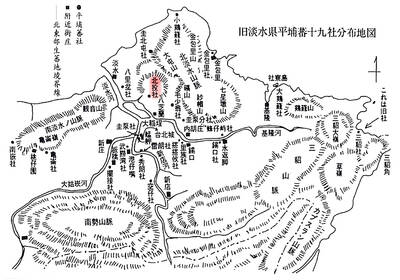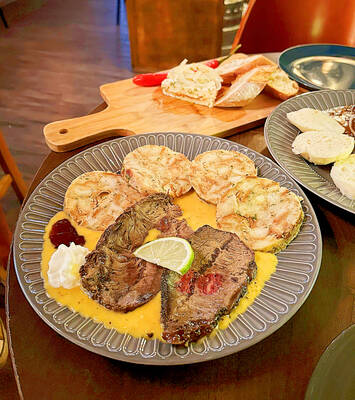There he (probably) squats, the most wanted man in the world. His world is a cave in the Hindu Kush or the badlands of Baluchistan. His life is constant flight. Maybe, because we've heard nothing from him for nearly a year now, he is wounded, cornered or dead. Maybe his famously loose network is unravel-ling faster than we think. Osama bin Laden, after all, is a turbaned crackpot, a mad mullah, an evil monster. Isn't he?
Alas for such simplicities. If you read the texts of what he's said and justified over the last decade, if you put aside soundbites and White House mantras, then any persuasive answer emerges cloaked in complexity.
For bin Laden is a charismatic man of action, an eloquent preacher, a teacher of literature and a resilient, cunning, wonderfully briefed politician. Underestimate him, as the West has often done, and humiliation is only another bomb blast away. Judge him on 30 occasional seconds of al-Jazeera video, glimpsed across a newsroom, and the stereotype is profoundly deluding.

Here, with a shrewd, scholarly introduction from Bruce Lawrence, is the complete bin Laden reader, from his early days when the House of Saud was enemy number one to his final advice to US President George W. Bush, John Kerry and America's voters on the right way to win an election. It is full of brusque, slightly surprising judgments: "Saddam Hussein is a thief and an apostate." He can sometimes turn a neat, almost humorous phrase. Bush has declared, a "Crusade attack" and the odd thing about this is that he has "taken the words right out of our mouth." Most strikingly, it deals in facts and assertions that can't easily be brushed aside.
Take the last years of the monarchical hiatus in Saudi Arabia and the ludicrous idea that "the entire length and breadth of the land is ruled in the name of a king who, for a decade, has no longer known what's going on." Take rampant corruption and "the huge theft which is known as the al-Yamama contract, US$30 billion slid from greasy palm to greasy palm. Take 9/11 and the US$640 billion wiped off share prices in one day," "equivalent to the budget of Sudan for 640 years."
Osama deals out dodgy statistics like a seasoned Treasury pro.
That's only half the story. The number-cruncher does spleen just as adroitly: "Every Muslim, from the moment they realize the distinction in their hearts, hates Americans, hates Jews, hates Christians." Apologize for killing innocents? "We kill the kings of disbelief and the kings of the Crusaders, and the civilians among the disbelievers, in response to the amount of our sons they kill: this is correct in both religion and logic." And one day there will be victory? "We believe the defeat of America is achievable -- with the permission of God -- and it is easier for us ... than the defeat of the Soviet empire."
It's a weird ideological stew. Sometimes, as when analysing Israel's hold on Washington policy-makers or dissecting the rottenness of too many Arab regimes, bin Laden could be launching a standard left-of-center political tirade. Sometimes, he is a gentle interpreter of a gentle religion, able to quote widely soothing verse.
Sometimes, he raves, the fundamentalist promising hellfire tomorrow. But break down the stew into its basic ingredients and there's always substance as well as bluster.
Bin Laden, guerrilla warrior against the Russians in Afghanistan, campaigner against Riyadh sleaze, fulminating opponent of American influence in his region and implacable foe of Ariel Sharon (if he "is a man of peace in the eyes of Bush, then we are also men of peace"), is not some random icon to the backstreets of Baghdad and Damascus.
He is formidable, an image, a force. If you're looking for a British parallel, though their policies have nothing in common, the politician he most reminds me of is radical former Labour minister Tony Benn, convincing as always about a golden past that has been betrayed, unveiling statistical amazements and historical myths with equal facility, always seeming safe within a cocoon of certitude.
And American politicians? US President George W. Bush himself, the matching crusader, stands out from a born-again pack.
Could bin Laden, like so many terrorists before him, be drawn into some kind of deal?
It's impossible, not because the man himself couldn't wheel and deal (if you chart his varying degrees of denial over 9/11 or Dar or Nairobi, you see a trimmer in a jam, a negotiator in search of a bargain), but because he has nothing to offer his foes.
You might just construct a "peace plan" where the Riyadh regime changed, Israel was pinned back to its earliest borders and the US army went home, but nobody who matters would be interested. This is a fight to the end, Osama's end. The only real question is how his legend will live.
The problem, as Lawrence says, is that bin Laden has no vision of the society he would wish to create, apart from a few thin riffs on Mullah Omar's Afghanistan.
He merely wants to blow the house down or up. His is a "narrow, limited creed." The lads who flock to his banner would soon grow restless if they had to live in Osamaland on "scriptural dictates, poetic transports and binary prescriptions."
Then the breakfast TV grillings from Frost of Arabia would be tough, not deferential.
But none of that will ever happen. We have only a fleeting, romantic horseman of the apocalypse high on some mountain skyline, a prophet in the mists. Such legends, alas, do live.

Seven hundred job applications. One interview. Marco Mascaro arrived in Taiwan last year with a PhD in engineering physics and years of experience at a European research center. He thought his Gold Card would guarantee him a foothold in Taiwan’s job market. “It’s marketed as if Taiwan really needs you,” the 33-year-old Italian says. “The reality is that companies here don’t really need us.” The Employment Gold Card was designed to fix Taiwan’s labor shortage by offering foreign professionals a combined resident visa and open work permit valid for three years. But for many, like Mascaro, the welcome mat ends at the door. A

The Western media once again enthusiastically forwarded Beijing’s talking points on Japanese Prime Minister Sanae Takaichi’s comment two weeks ago that an attack by the People’s Republic of China (PRC) on Taiwan was an existential threat to Japan and would trigger Japanese military intervention in defense of Taiwan. The predictable reach for clickbait meant that a string of teachable moments was lost, “like tears in the rain.” Again. The Economist led the way, assigning the blame to the victim. “Takaichi Sanae was bound to rile China sooner rather than later,” the magazine asserted. It then explained: “Japan’s new prime minister is

NOV. 24 to NOV. 30 It wasn’t famine, disaster or war that drove the people of Soansai to flee their homeland, but a blanket-stealing demon. At least that’s how Poan Yu-pie (潘有秘), a resident of the Indigenous settlement of Kipatauw in what is today Taipei’s Beitou District (北投), told it to Japanese anthropologist Kanori Ino in 1897. Unable to sleep out of fear, the villagers built a raft large enough to fit everyone and set sail. They drifted for days before arriving at what is now Shenao Port (深奧) on Taiwan’s north coast,

Divadlo feels like your warm neighborhood slice of home — even if you’ve only ever spent a few days in Prague, like myself. A projector is screening retro animations by Czech director Karel Zeman, the shelves are lined with books and vinyl, and the owner will sit with you to share stories over a glass of pear brandy. The food is also fantastic, not just a new cultural experience but filled with nostalgia, recipes from home and laden with soul-warming carbs, perfect as the weather turns chilly. A Prague native, Kaio Picha has been in Taipei for 13 years and